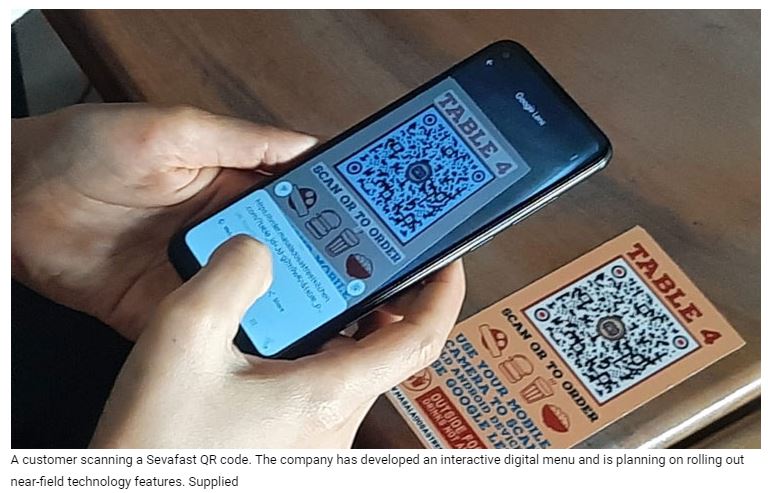Cambodia: Pandemic gives life to digital menus
The pandemic has created a seismic shift in the restaurant industry, first with the rise of online ordering and now through ordering via Quick Response (QR) code menus.
Nham24’s ship is poised to rise with the tides on the strength of using both.
With thousands of partnered restaurants and an ever-growing customer base, the company is the Kingdom’s most popular food delivery app.
Nham24 launched its QR-based digital menu feature earlier this month.
Since its introduction, about 300 restaurants per week on average have signed up for the feature nationwide.
Chan Borima, the company’s chief executive officer and founder, told Khmer Times that his firm began developing the feature in November before testing it with select eateries last month.
Using Nham24’s Digital Menu, allows diners to view menus on their smartphones, select menu items and show it to waiting staff to place their order.
It does not require users to have the Nham24 app on their phone.
The feature is available in three languages – Khmer, Chinese and English – with customers able to point to the item they want after scanning QR codes on tables.
Borima said his company was inspired to introduce the feature since “menus are one of the least hygienic items in restaurants because they pass through so many hands”.
He added that the feature will allow restaurants to turn more tables and save costs associated with printing, updating and maintaining menus.
“The human-interaction element of dining is never going to go away, but I think restaurants will use touch-free QR code menus and contactless payments to prevent the spread of Coronavirus [and take advantage of the associated time and cost savings],” Borima said.
A representative from Hyatt Regency Phnom Penh told Khmer times that the firm is building a similar system that will be introduced in the upcoming months.
It will allow guests at the hotel to scan a QR code which directs them to a static e-menu.
“Hyatt’s global team is developing the mobile ordering system so guests can actually order when they scan the QR code or access the menu through a dedicated link” the representative said.
Alongside established players, new companies are capitalising on the emerging QR code menu market.
Dharma Gohil, the owner of Masala Dosa Street Kitchen on Street 3, has already embraced the QR revolution. His restaurant removed physical menus more than a year ago.
Gohil’s restaurant served as a testing ground for Sevafast – an online platform that allows registered restaurants to accept and manage orders.
The company provides software service to restaurants wanting to maintain their branding, reduce overheads and revise menus.
Using Sevafast, customers scan individual QR codes associated with the table they are sitting at and then have their orders sent simultaneously to the cashier and kitchen staff.
Its conception was born out of necessity as the pandemic slowed down traffic to restaurants, forcing eateries to cut down on overheads.
Sevafast stands apart from other firms in that it allows eateries to use their own branding on items. It also allows their clients to accept pick-ups, deliveries, reservations and room service.
Sevafast also does not require customers to download an app – something that Gohil believes would hold back adoption of the technology. Instead, scanning a QR code takes users directly to an on-screen interactive menu.
“We have spent one year testing and perfecting the service. QR ordering is not really new: It’s just new to Cambodia and the pandemic has made a lot of customers familiar with the technology” Gohil said.
He noted that when Masala Dosa Street Kitchen first introduced QR code check-in posters at its storefront, customers were hesitant to use it.
“There is no question that the QR code is more than a trend and it’s here to stay. The real question is how interactive it will become and to what extent business owners will strive to maximise the technology to its fullest potential,” he said.
Already, Gohil is working on introducing near-field technology (NFC), which will allow users to simply tap their device so that customers can place orders via their smartphones.
“Our developers are also working closely with ABA Bank so that each individual restaurant can have its own account and receive payments directly to its bank accounts instead of going through an intermediary,” he said.
Source: https://www.khmertimeskh.com/50828300/pandemic-gives-life-to-digital-menus/


 Thailand
Thailand




